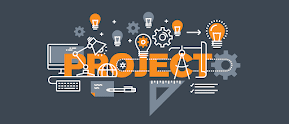EDU 404.2 Preparation and uploading of self designed article of pedagogic relevance in the blog
1.0.
Introduction
A blog is a type of website or online platform where an individual or a
group of individuals regularly publish written content in a chronological
order. The term "blog" is a shortened form of "weblog."
Blogs typically feature articles, commentaries, or personal reflections on a
particular subject or a range of topics.
Blogs allow individuals or organizations to share their thoughts,
opinions, expertise, experiences, or news updates with their audience. They
serve as a medium for expressing ideas, providing information, building
communities, and engaging in discussions with readers.
Blog posts are usually displayed in reverse chronological order, with
the most recent posts appearing at the top of the blog's homepage. Readers can
navigate through the different posts by scrolling down the page or using
navigation menus or search functions.
In addition to text, blogs often include multimedia elements such as
images, videos, and audio. They may also offer features such as categories or
tags to organize content and allow users to find specific topics of interest.
Blogs have gained significant popularity over the years due to their accessibility and ease of use. They have become a common platform for individuals, professionals, businesses, and organizations to share information, promote products or services, establish thought leadership, or simply communicate with their audience in a more informal and interactive manner.
1.1. Benefits
of Blogs in Education
Blogs can offer several benefits
in the field of education. Here are some ways in which blogs can be
advantageous for educational purposes:
1. Reflection
and Critical Thinking: Blogs provide a platform for students and educators to
reflect on their learning experiences, share their thoughts, and engage in
critical thinking.
2. Collaboration
and Community Building: Blogs can facilitate collaboration and community
building within an educational setting. Students can read and comment on each
other's blog posts, share resources, and engage in discussions.
3. Authentic
Audience: Unlike traditional classroom assignments that may only be seen by the
teacher, blogs provide an authentic audience for students' work.
4. Digital
Literacy and Technology Skills: Engaging with blogs helps students develop
digital literacy and technology skills.
5. Amplifying
Student Voice: Blogs empower students to have a voice and express their
perspectives on various topics.
6. Global
Connections and Cultural Exchange: Blogs provide opportunities for students to
connect with peers from different geographical locations or cultural
backgrounds. Through blogging, students can engage in virtual exchanges, share
perspectives, and gain insights into diverse perspectives, fostering global
awareness and cross-cultural understanding.
1.2.
Steps for blog creation
Choose a blogging platform.
Sign up and create an account.
Set up your blog by selecting a domain name and customizing its
appearance.
Define your blog's purpose and target audience.
Plan your content strategy and create an editorial calendar.
Write and publish your blog posts- Click new posts>paste the
material>click publish
Add relevant visuals or multimedia elements.
Optimize your blog posts for search engines.
Enable comments and engage with your readers.
Promote your blog through social media and other channels.
Monitor your blog's performance using analytics tools.
1.3. Report
This report presents an analysis of an article published on my blog as a part of my B.Ed curriculum. The article focuses on the diverse art forms and cultural heritage of India, which was published in 31/05/2023. It highlights the richness, variety, and significance of Indian art forms in preserving and representing the country's cultural heritage.
Reflection
The experience of creating a blog and sharing my
knowledge and insights has been transformative, reinforcing my commitment to
education and the joy of sharing knowledge.
The moment of
finally publishing the blog and making it accessible to a wider audience was
exhilarating. Sharing my knowledge and insights with others who share a passion
for art and culture was incredibly fulfilling. Witnessing readers' positive
feedback, comments, and engagement further fueled my joy and motivation. Engaging
with the audience and receiving feedback has been rewarding, knowing that my
blog has made a positive impact and inspired others to explore and appreciate
Indian art forms.
Creating and managing a blog has also allowed me to develop digital
skills, such as website customization and search engine optimization, enhancing
my digital literacy. Regularly writing blog posts has encouraged reflection and
improved my writing, critical thinking, and communication abilities. Witnessing
the impact of my blog on readers, fostering connections, and nurturing a sense
of community has brought me immense satisfaction. This journey has reinforced
the importance of education and the power of sharing knowledge to create a
positive impact in the world.
Conclusion
Overall, the experience of creating a blog and publishing material on
different art forms and cultural heritage of India was a fulfilling endeavor.
It allowed me to channel my passion, knowledge, and creativity into a platform
that shared the beauty and significance of Indian cultural expressions. The joy
of connecting with readers and contributing to their understanding of the
subject matter made the entire process truly memorable.





No comments:
Post a Comment